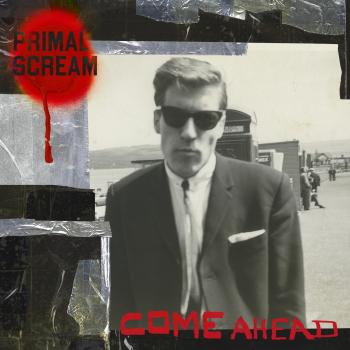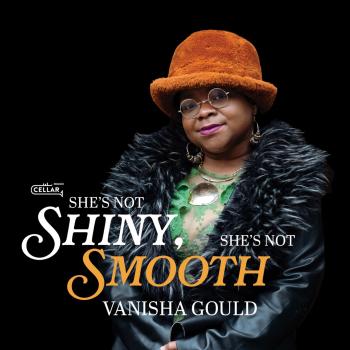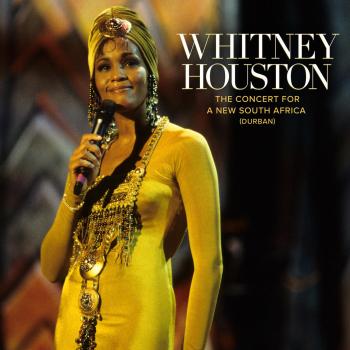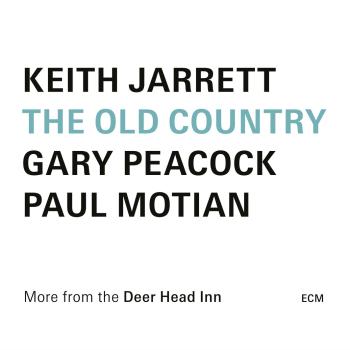
The Birds, The Bees & The Monkees The Monkees
Album info
Album-Release:
1968
HRA-Release:
13.07.2013
Album including Album cover
I`m sorry!
Dear HIGHRESAUDIO Visitor,
due to territorial constraints and also different releases dates in each country you currently can`t purchase this album. We are updating our release dates twice a week. So, please feel free to check from time-to-time, if the album is available for your country.
We suggest, that you bookmark the album and use our Short List function.
Thank you for your understanding and patience.
Yours sincerely, HIGHRESAUDIO
- 1 Dream World 03:16
- 2 Auntie's Municipal Court 03:55
- 3 We Were Made For Each Other 02:24
- 4 Tapioca Tundra 03:03
- 5 Daydream Believer 02:58
- 6 Writing Wrongs 05:06
- 7 I'll Be Back Up On My Feet 02:32
- 8 The Poster 02:16
- 9 P.O. Box 9847 03:18
- 10 Magnolia Simms 03:42
- 11 Valleri 02:16
- 12 Zor And Zam 02:08
Info for The Birds, The Bees & The Monkees
The Birds, The Bees & The Monkees is the fifth studio album by The Monkees released in April 1968. Despite being the first Monkees album not to reach Billboard's number one, it charted instead at number three and eventually sold over a million copies.
'By the time they released ‘The Birds, the Bees & the Monkees’ in April 1968, the Monkees had been on a nonstop roller-coaster ride for a solid 15 months. Record after record, live appearances and shooting their TV show made for an exceptionally busy schedule. Except for the soundtrack to their movie ‘Head,’ which came out later in the year, ’The Birds, the Bees & the Monkees’ would be the last album released by the original group.
Featuring more than half of its material written by band members, ‘The Birds, the Bees & the Monkees’ ranks as a favorite among longtime fans. Michael Nesmith and Peter Tork supply guitar and are aided by familiar names from Los Angeles’ famous studio brigade, including Al Casey, Joe Osbourne and Hal Blaine.
The album kicks off with one of Davy Jones‘ finest compositions, ‘Dream World,’ followed by one of Nesmith’s best, the Micky Dolenz-sung ’Auntie’s Municipal Court,’ which casts a glowing haze of country psychedelia and is co-written by Paul Revere and the Raiders guitarist Keith Allison. Another Nesmith winner, ‘Tapioca Tundra,’ follows, and it’s still hard to pin down 45 years later. The band even pulled this one out of mothballs on their tour last year to the delight of many Nez-heads.
‘Daydream Believer’ is one of the Monkees most beloved songs and for good reason: It’s one of the most perfect pop songs you’ll ever hear. Davy Jones’ signature tune hasn’t aged a bit. Nesmith’s ‘Writing Wrongs,’ on the other hand, features a darker, ominous vibe accompanied by heavy pounding drums and moody organ. Then, out of nowhere, the song changes course midway, soaring into a weird jazz odyssey that borders on proto prog before returning to the heavy thud that dominated the first half of the song. Clocking in at more than five minutes, ‘Writing Wrongs’ is the last thing you’d expect from a “manufactured pop group.”
Things get back to normal for ‘I’ll Be Back Upon My Feet’ and ‘P.O. Box 9847,’ which is penned by Tommy Boyce and Bobby Hart, who were responsible for so many of the Monkees’ early hits. John Lennon was inspired by an old show poster for ‘Sgt. Pepper’s”’ ’Being For the Benefit of Mr. Kite’; ‘The Birds, the Bees & the Monkees” ’The Poster’ tries to tell a similar tale, but it’s not nearly as good as the Beatles song. ‘Magnolia Simms,’ another oddball Nesmith cut, attempts to replicate an old 1920s recording with vinyl pops and hisses and a skipping needle. Even though Nesmith hated ‘Valleri,’ another hit single, it stands out on the album and features great work by session guitarist Louis Shelton.
The record ends with ‘Zor and Zam,’ one of the group’s all-time best. Set to marching-band drums, the song slowly builds over an antiwar tale. “Two little kings playing a game / They gave a war and nobody came” may have gone over the heads of the Monkees’ preteen audience at the time, but it served as a perfect complement to the album’s jazz-inspired freakouts, vintage ragtime riffs and psychedelic pop. Maybe because of this, ‘The Birds, the Bees & the Monkees’ was the first of the group’s albums to not reach No.1 (it stalled at No. 3). But it did sell a million copies, primarily fueled by the chart-topping ‘Daydream Believer.’ Still, it’s one of the band’s finest records, a great representation of the era and an even better pop album.' (Dave Swanson, www.ultimateclassicrock.com)
Davy Jones, vocals
Micky Dolenz, vocals
Peter Tork, vocals, guitar, piano
Michael Nesmith, vocals, guitar
Recorded at Western Recorders, RCA Victor Studios and United Recorders, Hollywood, California between June 1967 and March 1968
Produced by The Monkees and Chip Douglas
Reissue produced by Andrew Sandoval and Bill Inglot
Digitally remastered
The Monkees
"Hey hey, we are the Monkees/You know we love to please/A manufactured image/With no philosophies." In 1968, the Monkees addressed their own reputation in the song "Ditty Diego (War Chant)," which summed up the bad rap they'd received in the music press since they first emerged in the summer of 1966. The Monkees were talented singers, musicians, and songwriters who made a handful of the finest pop singles of their day (as well as a few first-rate albums) and delivered exciting, entertaining live shows. But at a time when rock music was becoming more self-conscious and "serious," the hipper echelons of the music press often lambasted the Monkees, largely because they didn't come together organically but through the casting process for a television series, and they initially didn't write the bulk of their own material or play all the instruments on their records. The fact they later took creative control of their music was often overlooked, and the quality of their music, which featured the work of some of the finest session players and songwriters of the 1960s, often seemed to be beside the point. Time has ultimately vindicated the Monkees, and their music still sounds fresh and engaging decades after it was recorded, but in some circles they never fully shook being branded as "the Pre-Fab Four," no matter how far they moved from the circumstances that brought them together.
The Monkees story began in the fall of 1965, when Bob Rafelson and Bert Schneider, a pair of producers whose Raybert Productions had a deal with Columbia Pictures and their TV branch Screen Gems, came up with an idea for a television series about a rock group. Inspired by Richard Lester's groundbreaking comedies with the Beatles, A Hard Day's Night and Help!, Rafelson and Schneider imagined a situation comedy in which a four-piece band had wacky adventures every week and occasionally burst into song. The NBC television network liked the idea, and production began on The Monkees in early 1966. Don Kirshner, a music business veteran who was a top executive at Colgems Records (a label affiliated with Columbia/Screen Gems), was appointed music coordinator for the series, and Tommy Boyce and Bobby Hart, a producing and songwriting team, signed on to handle much of the day-to-day chores of creating music for the show's fictive band. A casting call went out for four young men to play the members of the group, and Rafelson and Schneider's choices for the roles were truly inspired. Michael Nesmith and Peter Tork were musicians with solid performing and recording experience who also had a flair for playing comedy, while Micky Dolenz and Davy Jones were primarily actors but had also dabbled in pop music and had strong vocal abilities. As the show went before the camera, Kirshner had Boyce and Hart take the four leads into the studio to begin recording the songs that would be featured on the show each week. While initially the cast was only going to provide vocals for material Boyce and Hart had already recorded, the producers were impressed enough with Nesmith's songwriting skills that they chose to use a few of his tunes and let him produce them. With this, the Monkees took their first step toward evolving into a proper, self-sufficient rock band.
The Monkees debuted on NBC in the fall of 1966 and was an immediate hit in the ratings, while "Last Train to Clarksville," the group's first single, had become a number one hit a few weeks earlier (the self-titled debut album would top the chart in October). Rafelson, Schneider, and Kirshner shrewdly allowed the show to promote the records and vice versa, and while the notion that television time could sell pop records was hardly new (Ricky Nelson proved that almost a decade earlier), no one had made it work with quite the success the Monkees achieved almost immediately. Dozens of Monkees-related products flooded the marketplace, from toy guitars and lunch boxes to board games and models of the custom Pontiac the guys drove on the show. In late 1966, someone got the idea of booking a few live shows with the Monkees, and recordings of their early concerts prove that while not all four were virtuoso musicians, they worked well together on-stage and were a energetic, rough-and-ready rock band who could work a crowd. As the Monkees gained confidence in their abilities as performers, they began to chafe under the restrictions imposed on them by Kirshner, who had full control over what songs they would record and who would produce and play on the sessions. More, than visit: http://www.monkees.net
This album contains no booklet.














